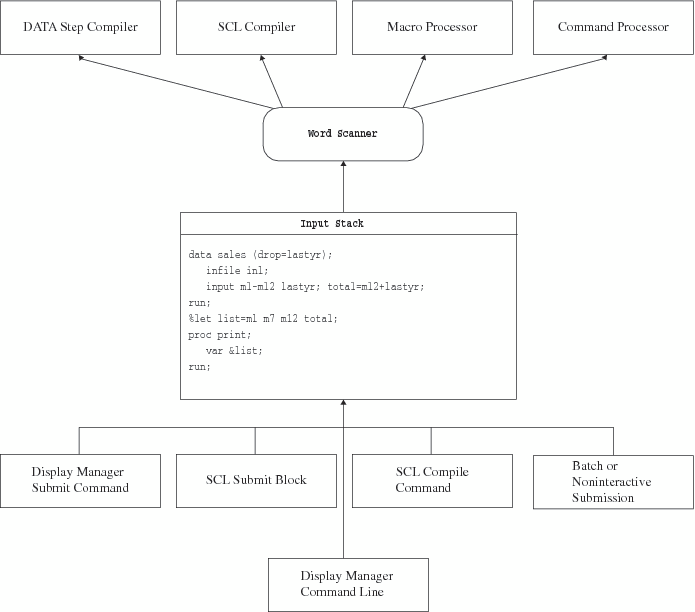SAS Programs and Macro Processing
This section describes
the typical pattern that SAS follows to process a program. These
concepts are helpful for understanding how the macro processor works
with other parts of SAS. However, they are not required for most
macro programming. They are provided so that you can understand what
is going on behind the scenes.
Note: The concepts in this section
present a logical representation, not a detailed physical representation,
of how SAS software works.
When you submit
a program, it goes to an area of memory called the input
stack. This is true for all program and command sources:
the SAS windowing environment, the SCL SUBMIT block, the SCL COMPILE
command, or from batch or noninteractive sessions. The input stack
shown in the following figure contains a simple SAS program that displays
sales data. The first line in the program is the top of the input
stack.
Once a program reaches
the input stack, SAS transforms the stream of characters into individual
tokens. These tokens are transferred to different parts of SAS for
processing, such as the DATA step compiler and the macro processor.
Knowing how SAS recognizes tokens and how they are transferred to
different parts of SAS will help you understand how the various parts
of SAS and the macro processor work together. Also how to control
the timing of macro execution in your programs. The following sections
show you how a simple program is tokenized and processed.
